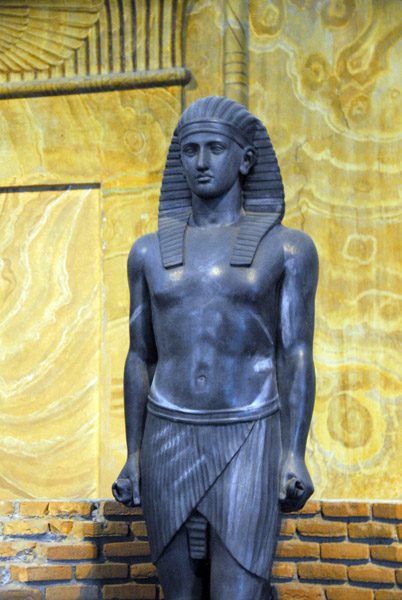
Gregorian Egyptian Museum founded by Pope Gregory XVI in 1839 |
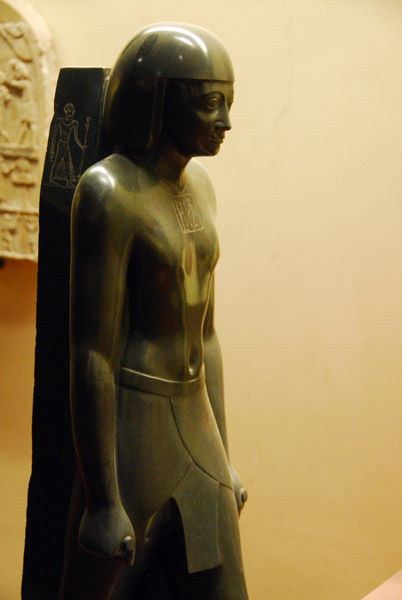
Statue of the priest Pa-sher-ta-iah, XXVI Dynasty (Necho II) 610-595 BC |
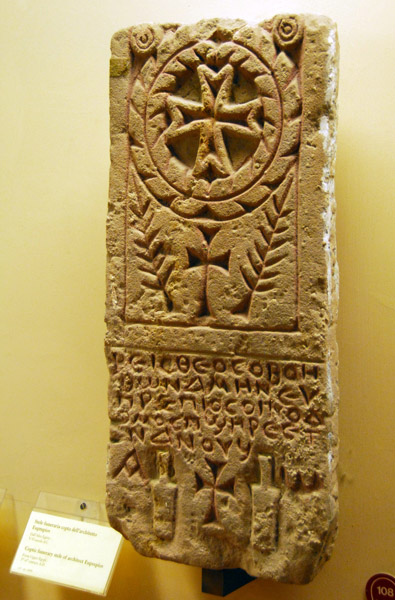
Coptic funerary stele of architect Euprepios, Upper Egypt 5-6th C. AD |
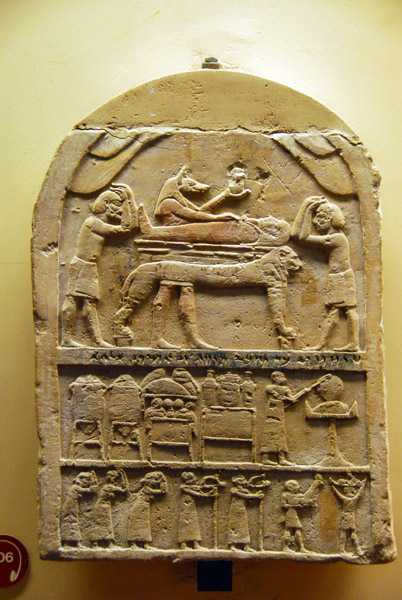
Funerary stele of the "servant of Osiris" Ankh-Hapy with Aramaic inscription, XXVII Dynasty, 525-500 BC |
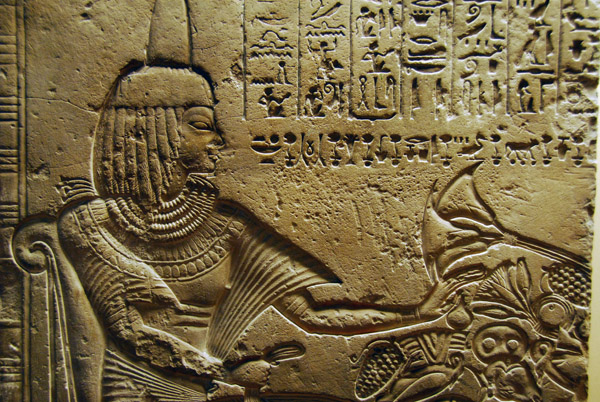
Relief fragment from a tomb, New Kingdom - end of XVIII Dynasty ca 1325 BC |
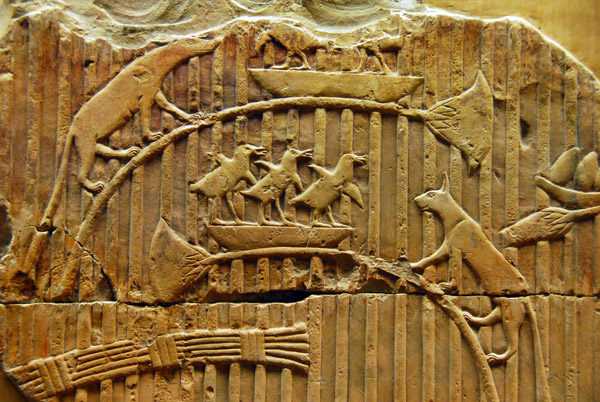
Fragment of a tomb relief depicting wildlife along the Nile, Old Kingdom VI Dynasty ca 2250 BC |
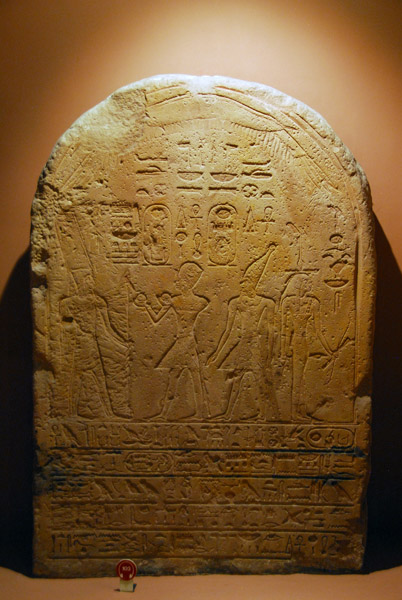
Commemorative stele of Hatshepsut and Thutmosis III, Karnak - XVIII Dynasty 1475-1468 BC |
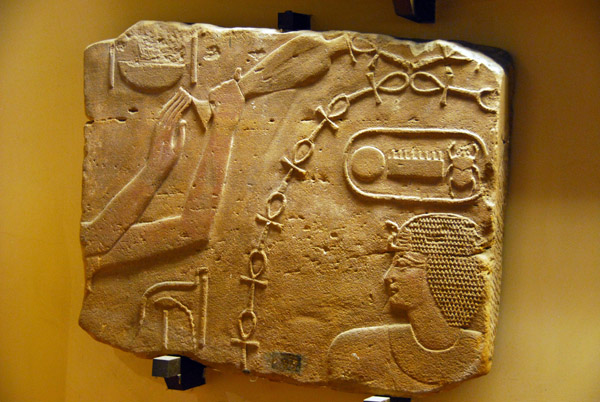
Fragment of a relief dedicated by Thutmosis III from the Temple of Montu at Thebes, XVIII Dynasty 1458-1425 BC |
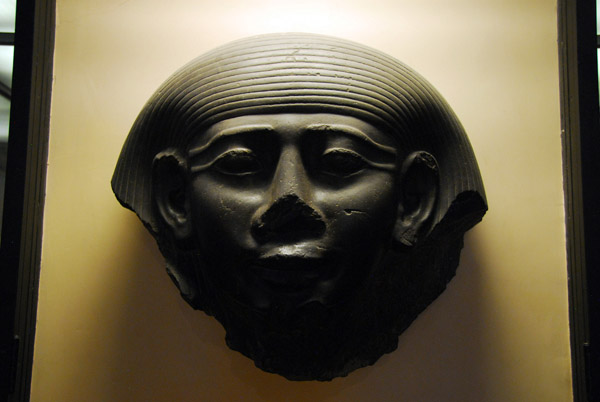
Mask belonging to the lid of the coffin of the priest Psammetek, XXVI Dynasty 644-525 BC |
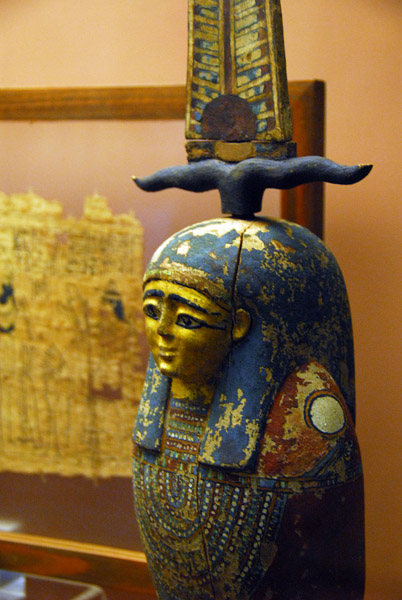
Wooden box for Book of the Dead as statue of Osiris-Ptah-Sokar of Memphis, 3rd C. BC |
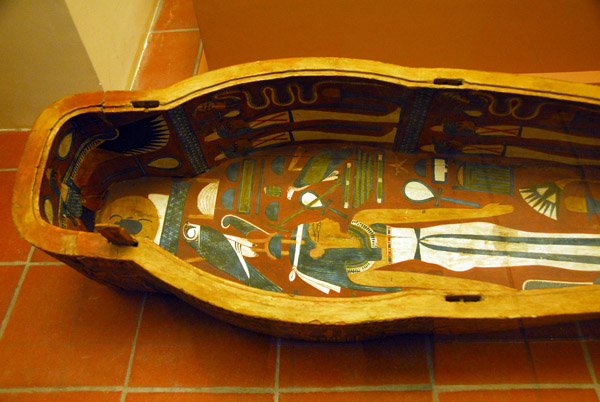
Painted coffin depicting Hathor, patron deity of the Necropolis of Thebes, XXI Dynasty 960-945 BC |
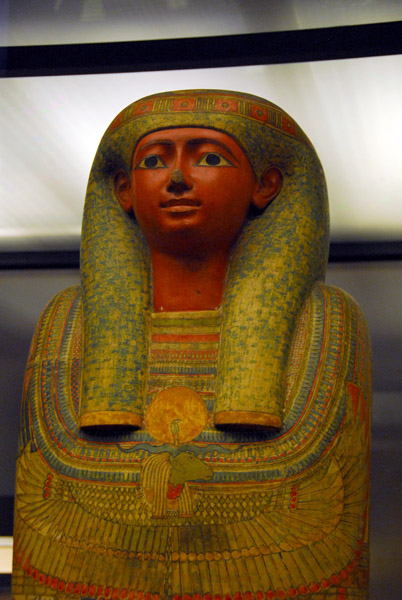
Sarcophagus of the Mistress of the House of Hetep-heres, XXV Dynasty ca 700 BC |
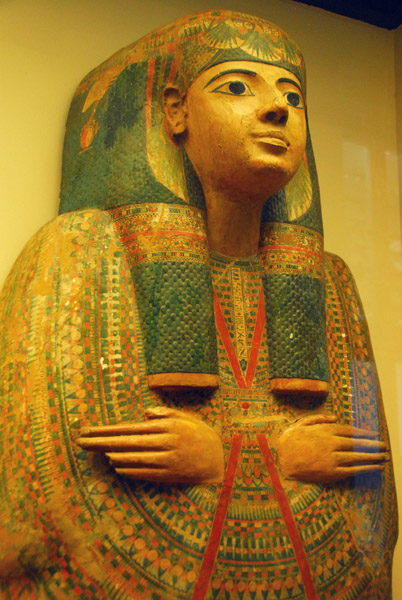
Sarcophagus of the Priestess of Amon-Ra Djed-Mut, New Kingdom mid 10th C. BC |
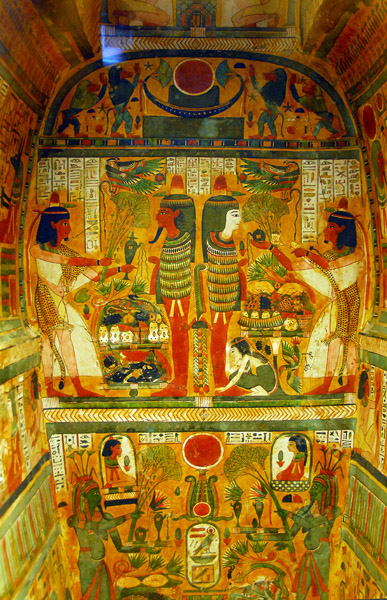
Sarcophagus of the Priestess of Amon-Ra Djed-Mut, New Kingdom mid 10th C. BC |
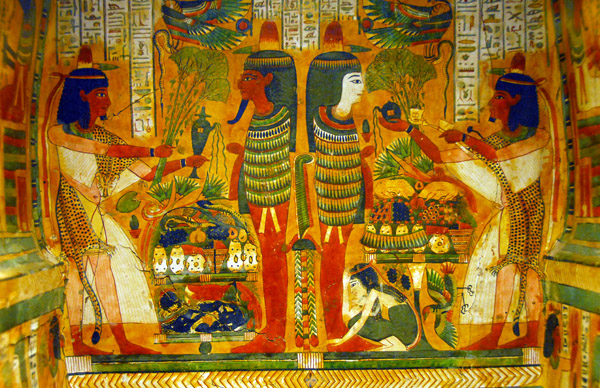
Detail of the paintings inside the sarcophagus case of Djed-Mut |
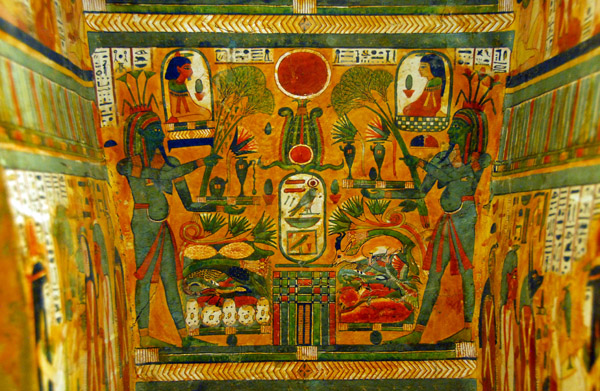
Detail of the paintings inside the sarcophagus case of Djed-Mut |
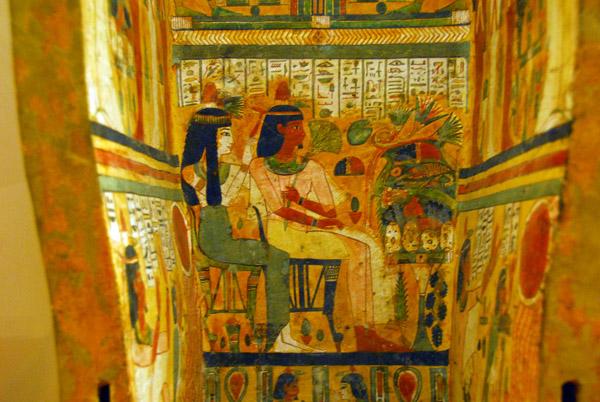
Detail of the paintings inside the sarcophagus case of Djed-Mut |

Mummy of a woman, XXI Dynasty (1070-945 BC) |
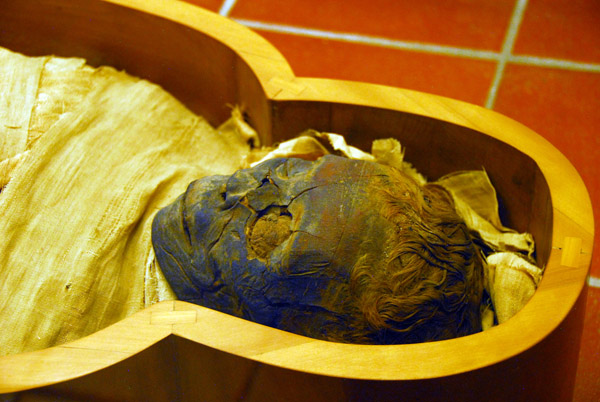
Mummy of a woman, XXI Dynasty (1070-945 BC) |
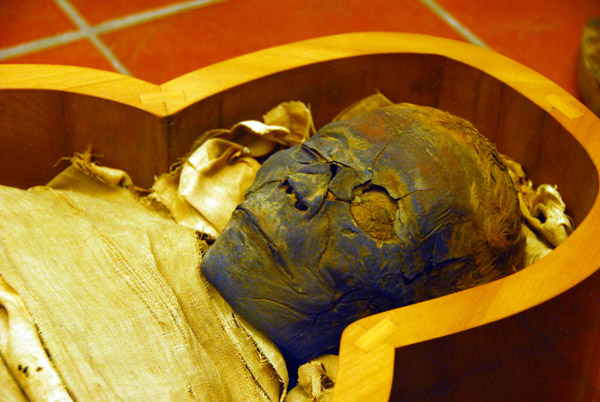
The brain was probably extracted through the left eye, now filled with a piece of cloth |
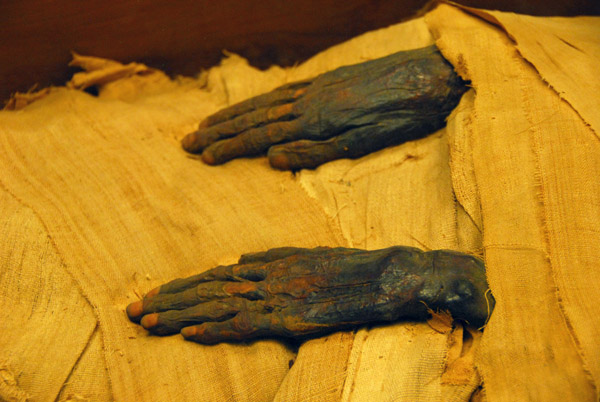
Hands of the mummy from the Necropolis of Deir el-Bahri in Thebes |
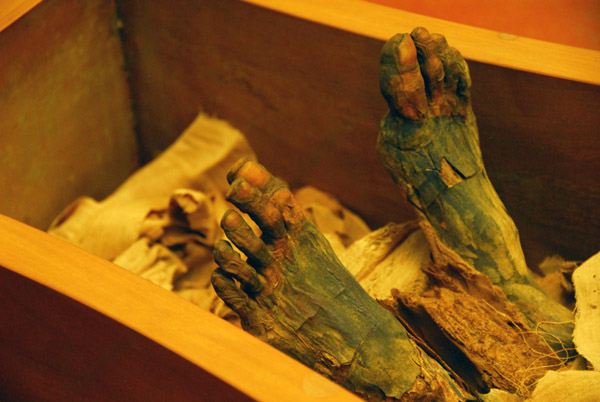
Feet of the mummy from the Necropolis of Deir el-Bahri in Thebes |
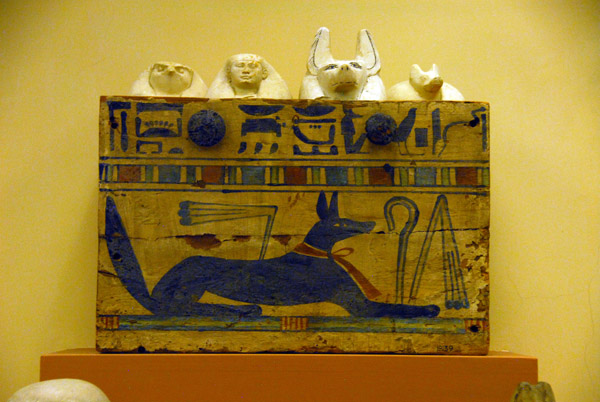
Wooden box painted with Anubis in the form of a jackal containing four canopic jars |
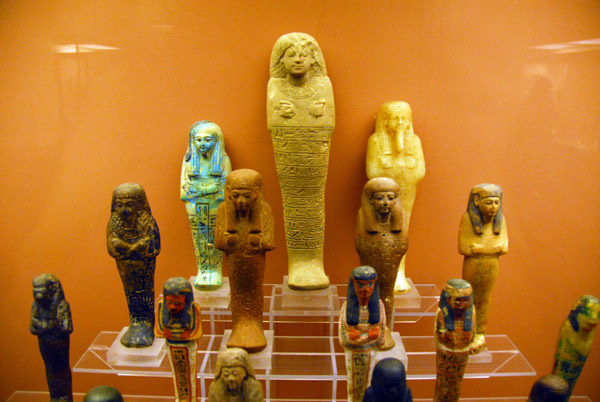
Various Ushabti (funerary figurines) of the New Kingdom, 1450-1000 BC |
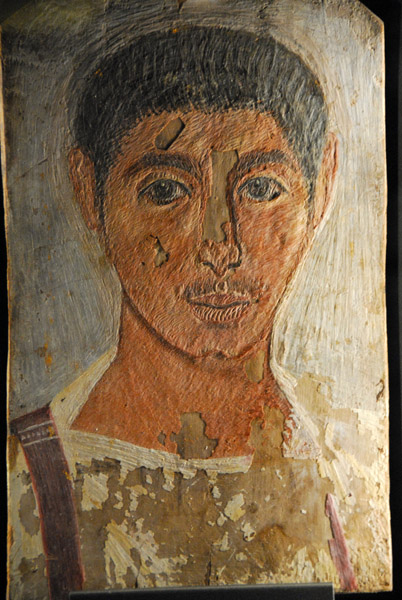
Fayum Portrait (painted funeral mask) of a young main, 220-250 AD |
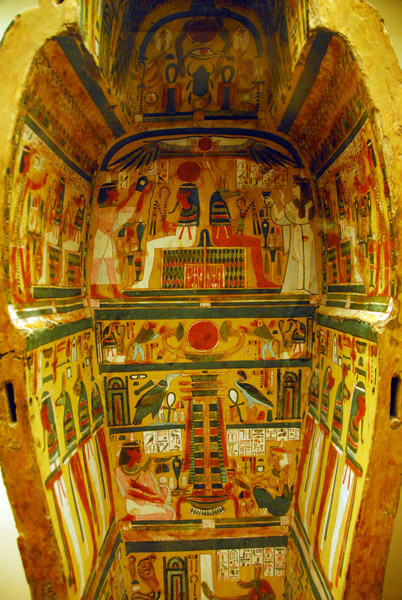
Sarcophagus of the priest Djed-hor-iuef-ankh, "he who opens the door of the Heaven" XXI Dynasty ca 1000 BC |
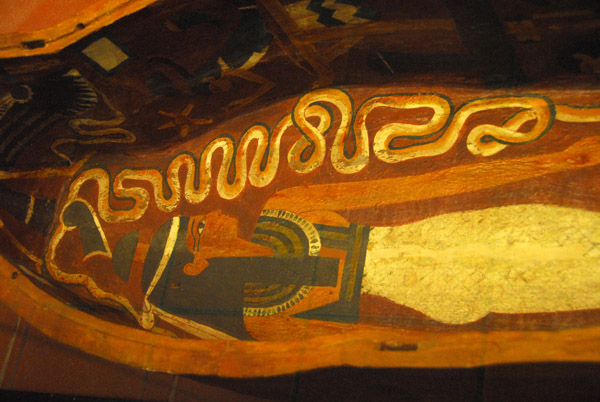
Sarcophagus painted with a figure of the goddess Ma'at, identifiable through the feather headdress |
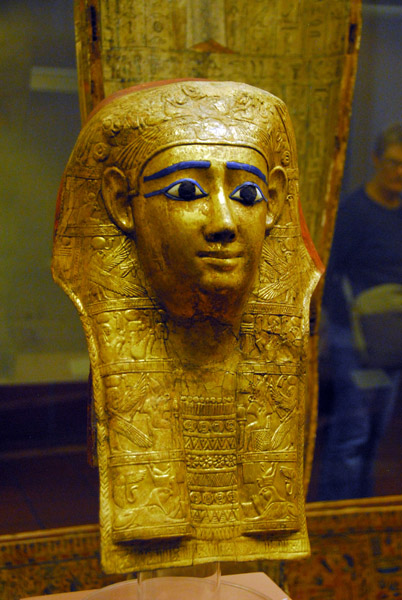
Mummy mask of gilded cartonnage, 1st C. AD |
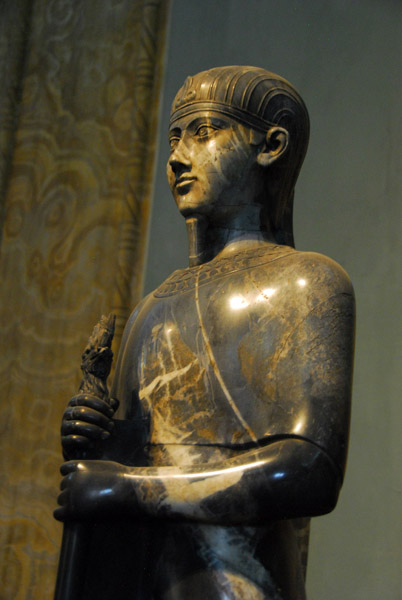
Statue of the god Ptah, Roman Imperial Period (Hadrian) 131-138 AD |
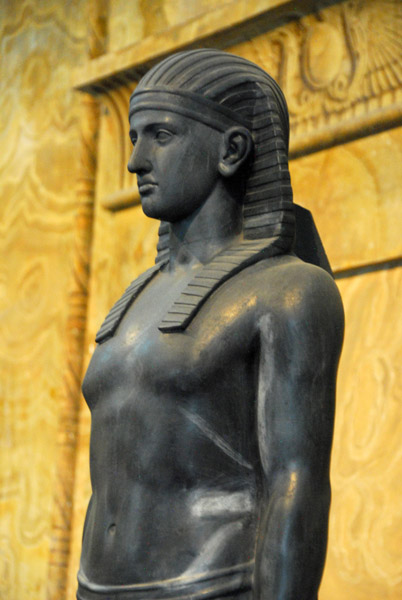
Statue of Antinous-Osiris, Roman Imperial Period (Hadrian) 131-138 AD |
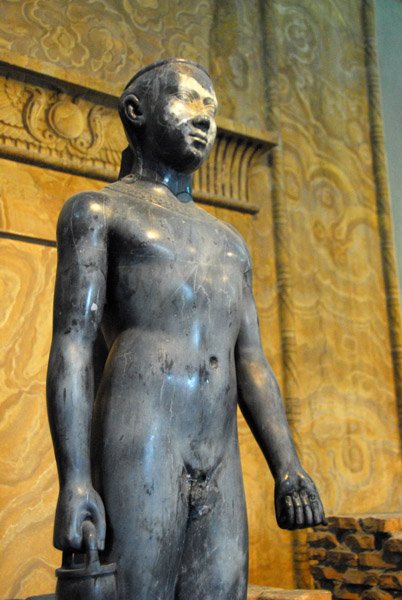
The god Nefertum, Roman Imperial Period (Hadrian) 131-138 AD |
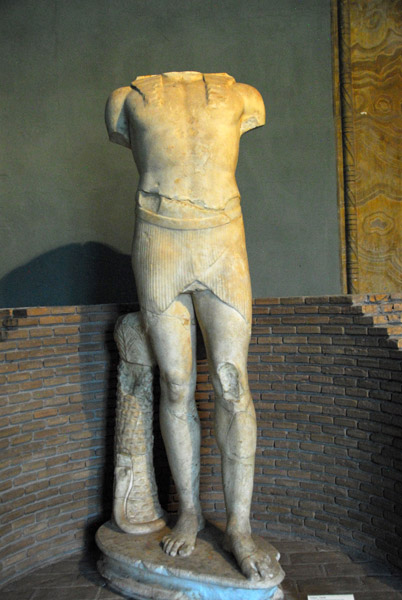
Headless statue of Antinous-Osiris, Roman Imperial Period (Hadrian) 131-138 AD |
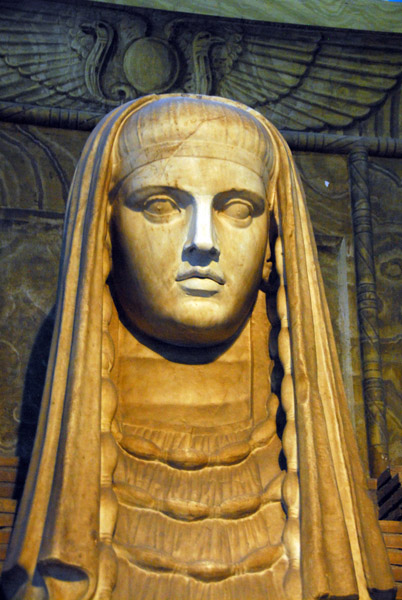
Bust of the goddess Isis-Sothis-Demeter, Roman Imperial Period (Hadrian) 131-138 AD |
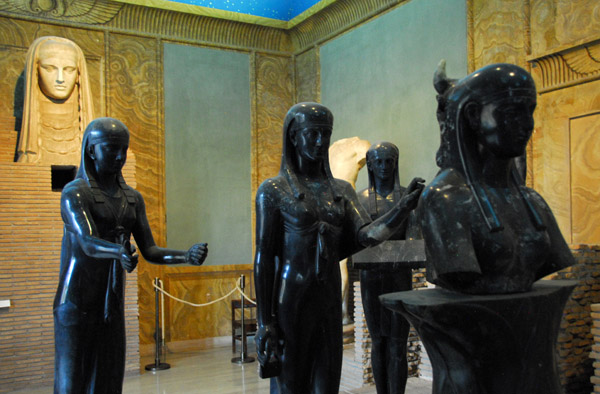
Priestesses participating in the rite of Osiris' Birth, Roman Imperial Period (Hadrian) 131-138 AD |
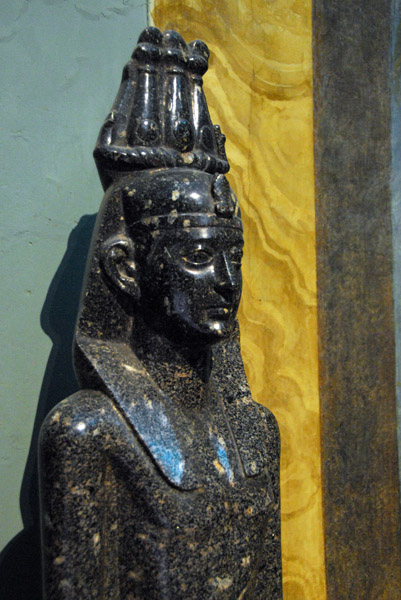
Statue of the god Horus-Zeus Casios of Pelusium, , Roman Imperial Period, 2nd C. AD |
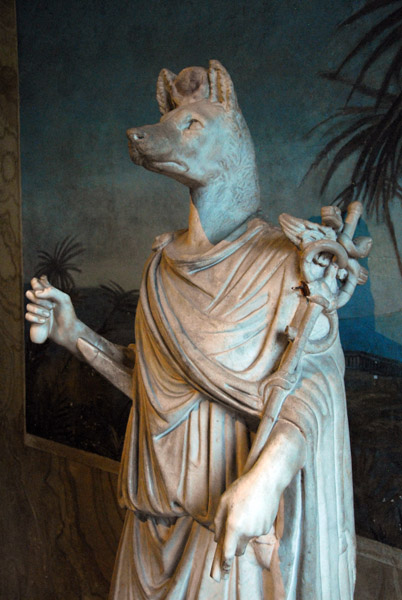
The god Anubis from Anzio, Roman Imperial Period, 1st-2nd C. AD |
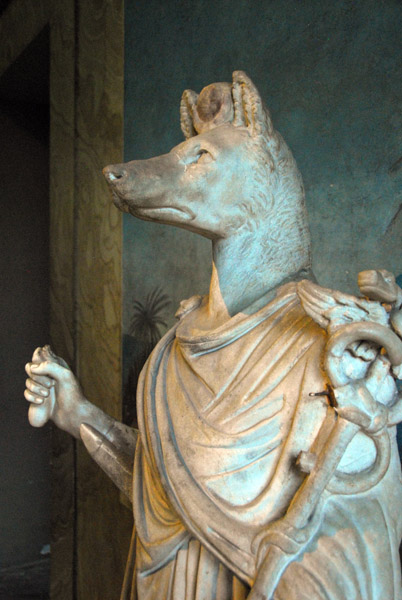
The god Anubis from Anzio, Roman Imperial Period, 1st-2nd C. AD |
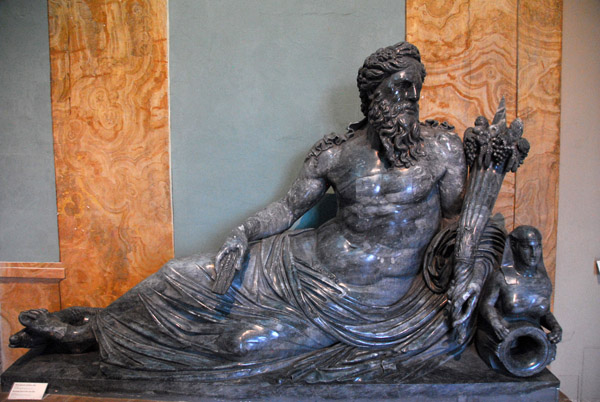
Reclining statue of the river Nile, Roman Imperial Period, 1st C. AD |
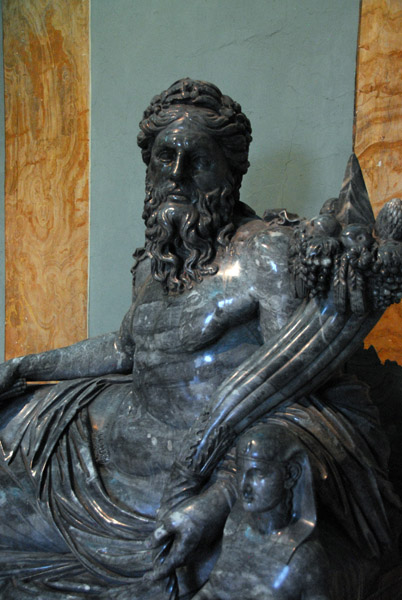
Reclining statue of the river Nile, Roman Imperial Period, 1st C. AD |
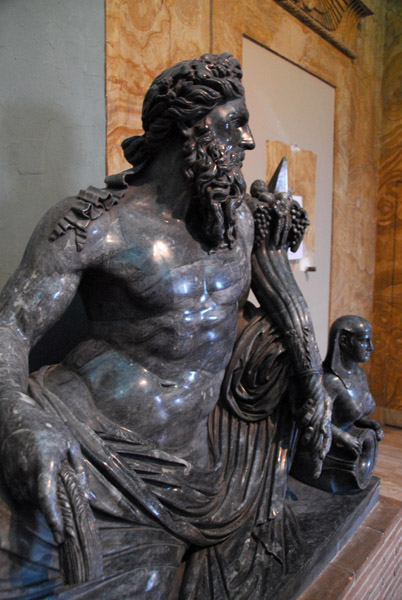
Reclining statue of the river Nile, Roman Imperial Period, 1st C. AD |
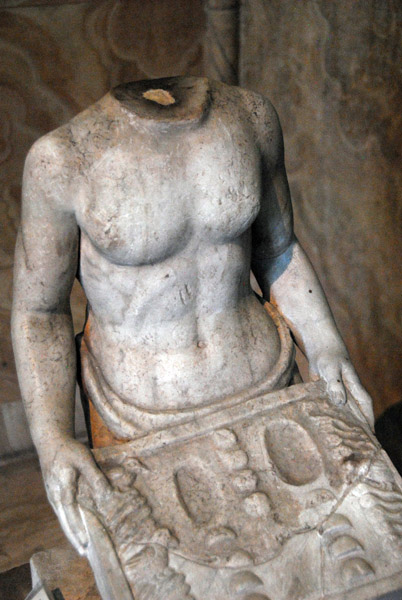
Hapy, god of the flood of the Nile from Veio, Roman Imperial Period, 1st C. AD |

Hapy, god of the flood of the Nile in fountain shape, Roman Imperial Period, 1st C. AD |
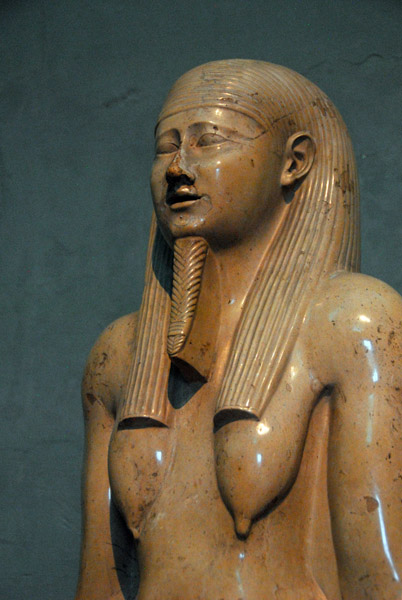
Hapy, god of the flood of the Nile in fountain shape, Roman Imperial Period, 1st C. AD |
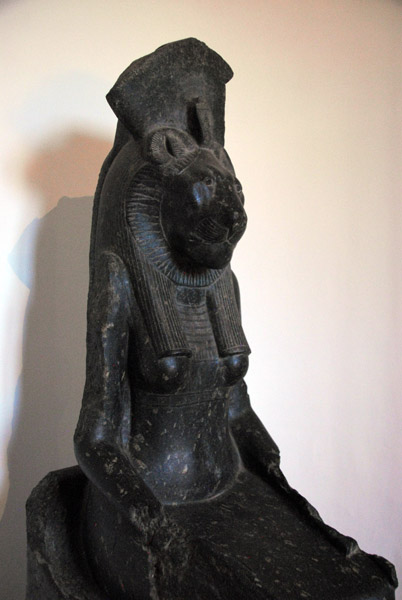
Statue of the goddess Sekhmet enthroned from the Temple of Mut at Karnak, XVIII Dynasty (Amenofis III) 1390-1352 BC |
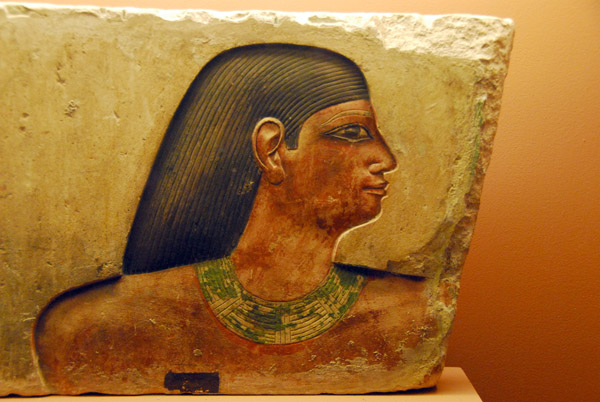
Painted relief fragment, IVth Dynasty, Gregorian Egyptian Museum |
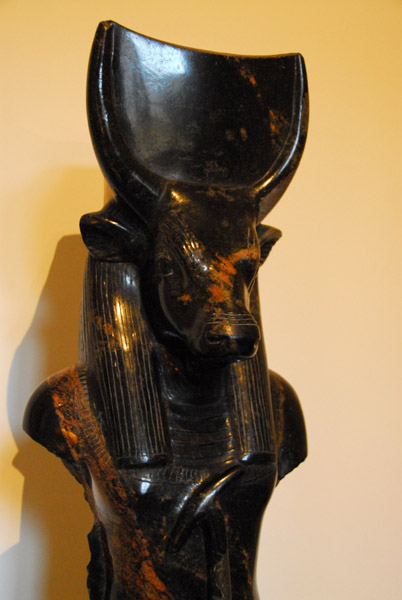
Torso of a statue of the bull god Apis, Ptolemaic Period 3rd-2nd C. BC |
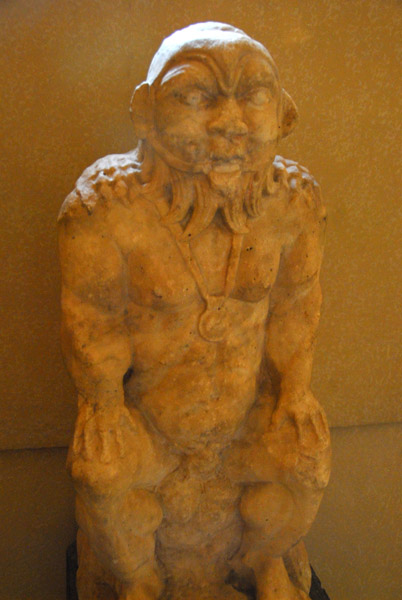
Statue of Bes, patron genius of pregnant women, Ptolemaic Period 3rd-2nd C. BC |
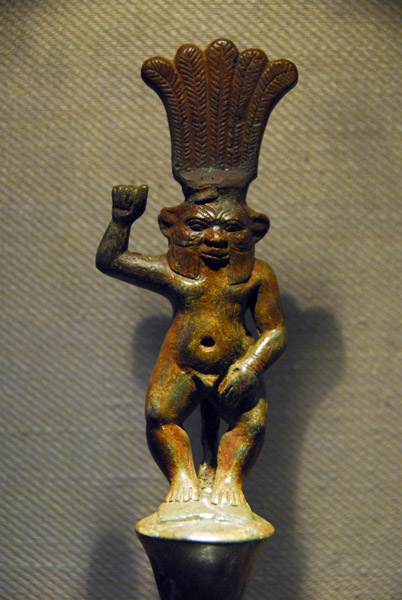
Another figure of Bes, Gregorian Egyptian Museum |
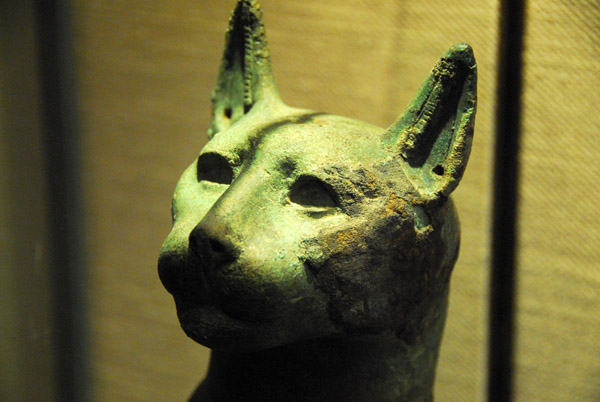
Hollow bronze cast of the cat goddess Bastet containing the mummy of a cat, XXII Dynasty (945-712 BC) |
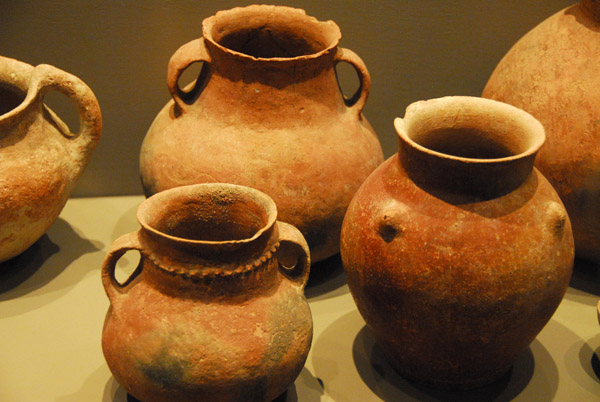
Ancient Levantine pottery, displayed as part of the Gregorian Egyptian Museum |
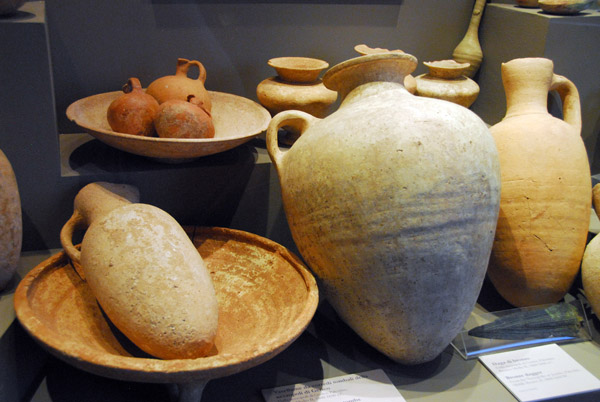
Levantine pottery, 1800-1650 BC |
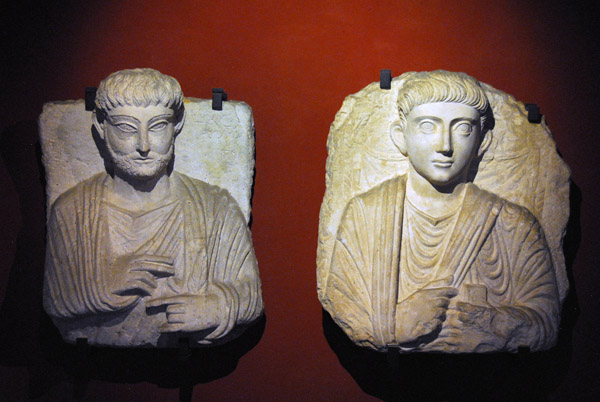
Funerary reliefs from Palmyra, 1st-2nd C. AD |
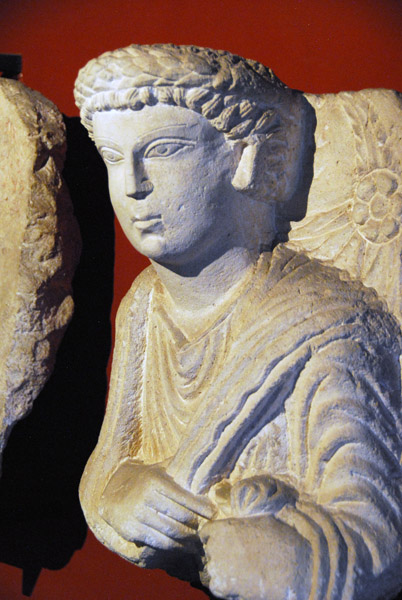
Funerary relief from Palmyra, 1st-2nd C. AD |
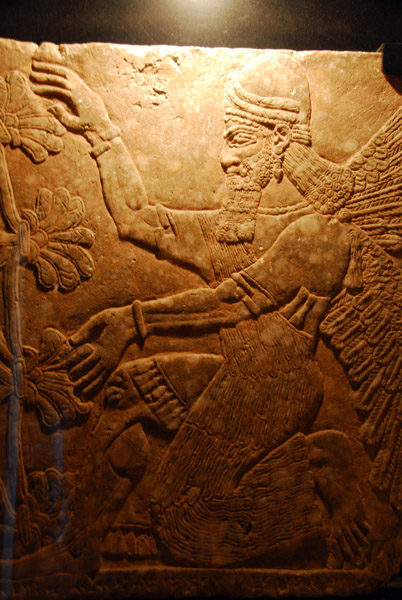
Winged figure kneeling in front of the Sacred Tree, Assyrian, (Ashurnasirpal II) 883-859 BC |
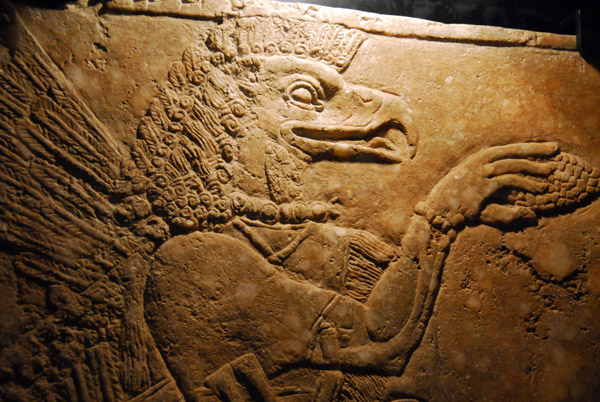
Eagle-headed winged figure worshiping the Sacred Tree, Assyrian from the reign of Ashurnasirpal II (883-859 BC) |
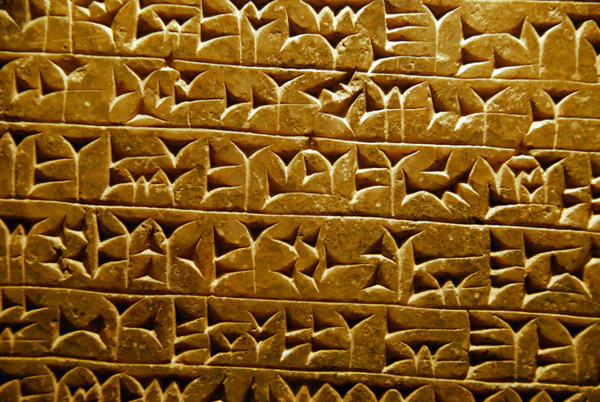
Inscription of Sargon I from the inner court of the palace at Khorsabad, Assyrian 721-705 BC |











